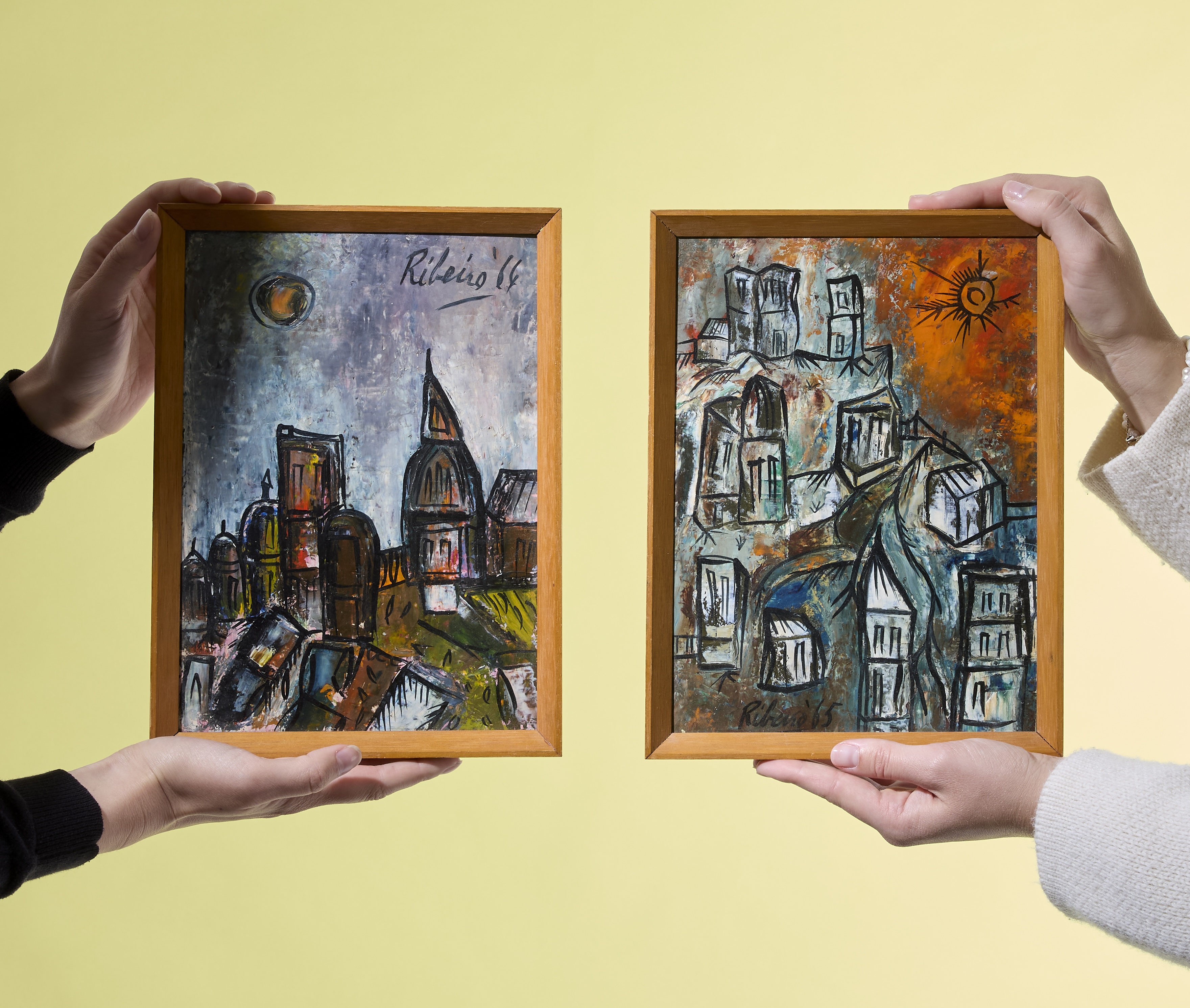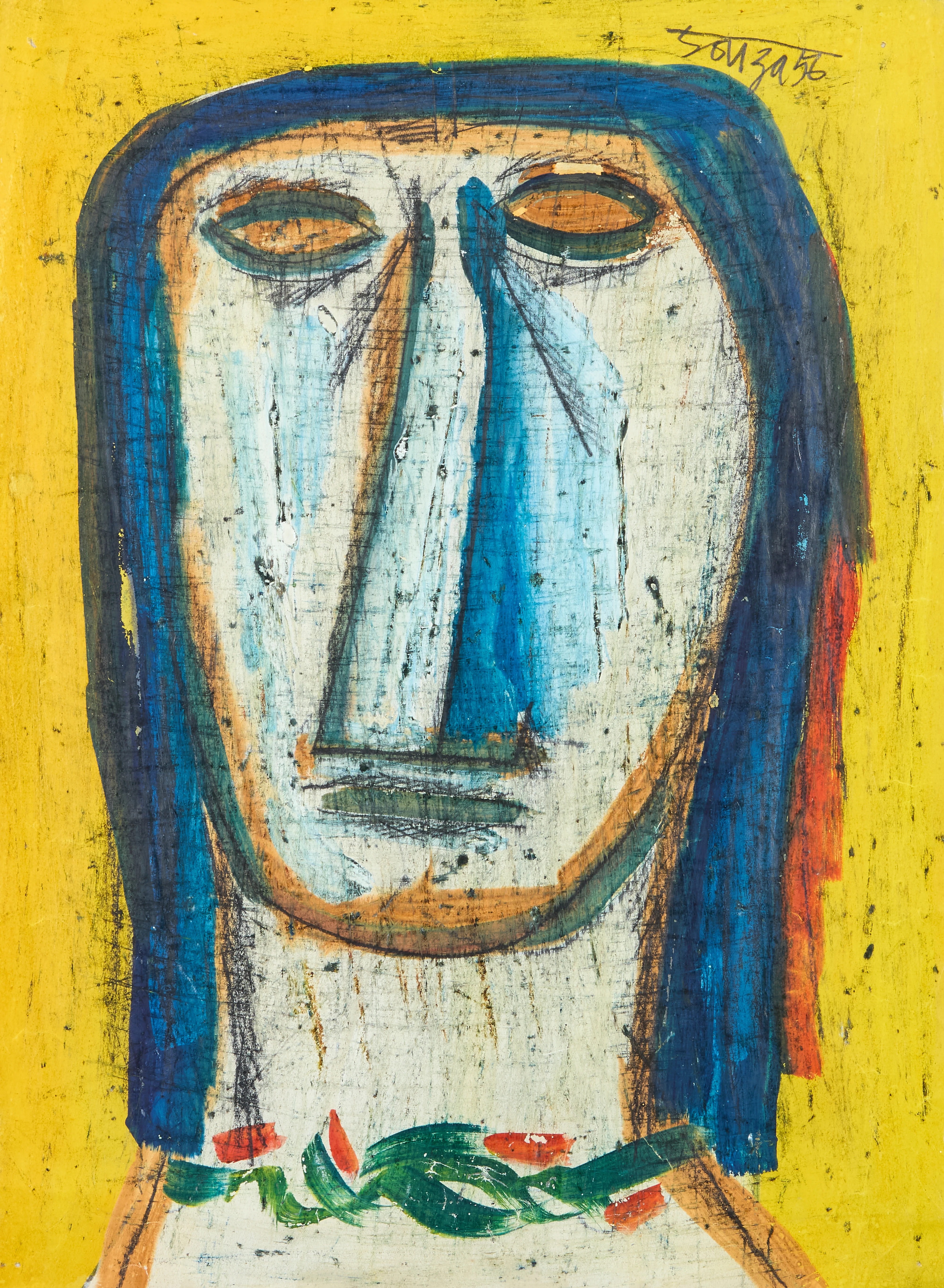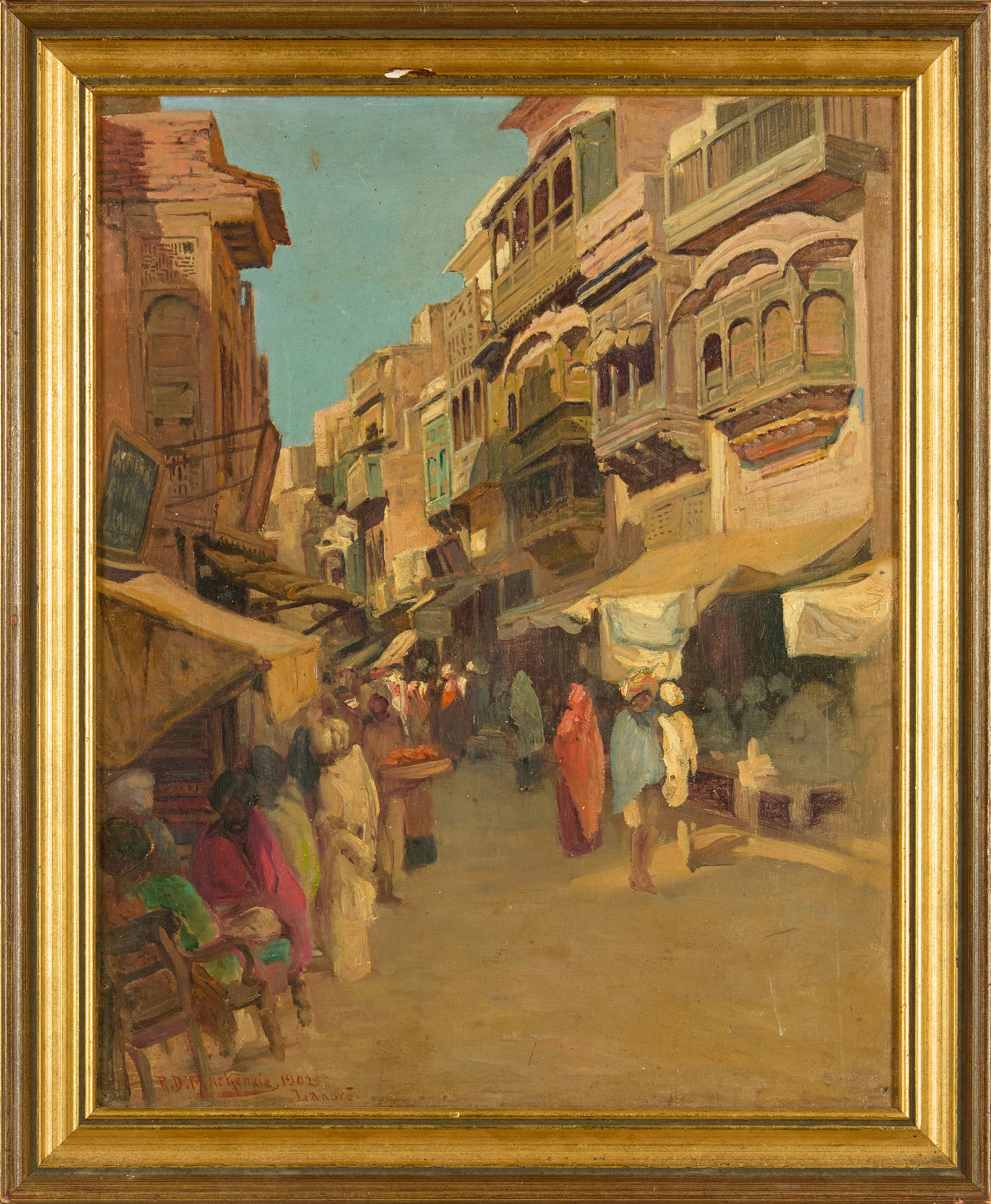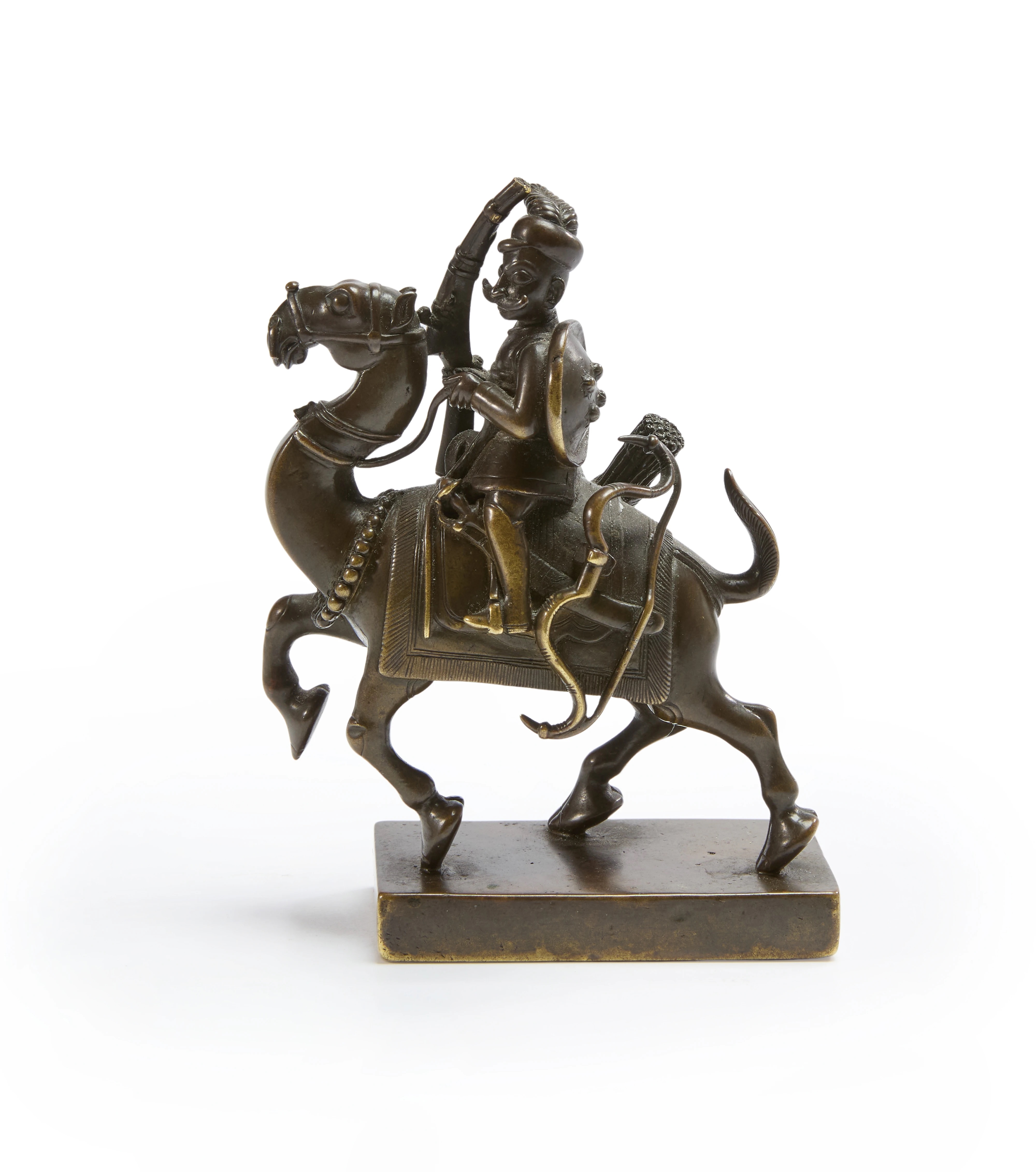Roseberys’ Arts of India sale on Tuesday 10 June was led by the sale of a previously unseen 1956 ink and gouache by F.N. Souza, believed to be a rare study for his major early painting Susanna and the Elders. The work realised £36,640 - 4.5 times its low estimate - following competitive bidding online and by telephone, and was acquired by a UK gallery.
Lot 197: F.N. Souza, Indian, 1924-2002, Head of a Woman, 1956
Price Realised: £36,640
Research suggests the work could be an early study for Susanna and the Elders, which sold at Sotheby’s in 2019 for £1,191,000. It bears striking visual similarities to the finished painting, including the nose rendered in three planes of black, yellow and blue, a chain-link necklace, a thinly drawn agape mouth, and a three-quarter view composition. Souza was producing preparatory works for Susanna and the Elders as early as 1955. A 1958 letter in the Tate Archives to his gallerist Victor Musgrave suggests the final painting was completed in November that year, making Head of a Woman contemporaneous with other works associated with the project.
The study, depicting the head of a woman, came from a significant private collection of figurative Indian modernist works, consigned from the property of a gentleman. It was the first time the collection had appeared at auction and it achieved an 88% sell-through rate. Spanning lots 197 to 204 and dating from the 1950s to the 1970s, the group also featured paintings by Souza’s half-brother Lance Ribeiro and by A.A. Almelkar, a painter affiliated with the Bombay Progressive Artists’ Group.

From left to right: lot 201 and 202, Lance Ribeiro, Prices realised: £7,216 and £6,035
Two townscapes by Ribeiro, painted in 1964 and 1965, each sold for prices above their high estimates. They are strong examples of his early expressionist style; charged compositions marked by thick impasto, jagged linework, and heavy outlines. They invite comparison with lot 207, a mixed media townscape by Souza that realised a price of £8,528. While Ribeiro’s early works show visual affinities with Souza’s, he would soon develop a distinctive language of his own, moving away from expressionism toward an architectural abstraction. His technical inventiveness, particularly his pioneering use of acrylic paints for their immediacy and brilliance, sets him apart from his half-brother.
Lot 207: F.N. Souza, Indian 1924-2002- Landscape, 1988
Price Realised: £8,528
A vivid tempera on card by A.A. Almelkar (1920–1982) sold for £7,872 against an estimate of £5,000–£7,000, going to a private Indian buyer. The painting draws on the occidental Kalighat school and depicts a fishing scene from civil life. Though rendered in bright colours and dynamic, sinuous lines typical of the folk tradition, the picture is distinctly modern in tone, characteristic of mid-20th-century Indian painting.
Lot 203: Abdulrahim Apabhai Almelkar, Indian, 1920-1982, Untitled (Women fishing)
Price Realised: £7,872
In the classical section of the sale, three further works exceeded expectations: a copper alloy model of a mounted soldier, an orientalist scene by Roderick Dempster MacKenzie, and a rare First Class Order of the Durrani Empire, made for officers of the Bengal Army. The MacKenzie painting, modestly estimated at £500–£700, realised a price of £10,496, a world record for the artist—selling to a private Indian buyer.
Lot 154: Roderick Dempster Mackenzie, British 1865-1941- Two Lahore Street Scenes, 1902
Price Realised: £10,496
At the request of art dealers in Calcutta, who wished him to paint popular subjects like tigers and jungles, Mackenzie set off for India in 1903 on what would become a 14-year adventure. Journeys to the Khyber Pass and his long residencies along the Afghanistan and Baluchistan borders inspired many topographical works. In 1902, he was commissioned by the English Viceroy and the Indian government to paint the official image representing the proclamation of King Edward VII as Emperor of India.
Lot 133: A copper alloy model of a mounted soldier : a musket man on his camel, Vizagapatam, South India
Price Realised: £11,808
The copper alloy model of a mounted soldier, a musket-bearing camel rider from Vizagapatam circa 1795, sold for £11,808 against a £1,500–£2,000 estimate to an esteemed collector. These so-called “Vizagapatam Toy Soldiers” are part of a celebrated group of 18th-century brass models held by the Ashmolean, V&A, National Army Museum, and collections in India. Thought to represent the troops of Tipu Sultan, sometimes referred to as the ‘Tiger of Mysore’ for his military adventures, the models may have been made for one or several of his sixteen sons.
“This sale shows that collectors are increasingly responsive to fresh-to-market works with strong provenance and historical resonance, whether traditional bronzes or rediscovered studies by major modernists like Souza,” commented Alice Bailey, Director and Head of Department.









